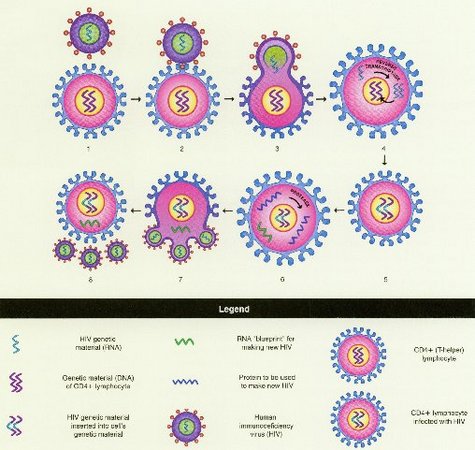* lymph (LIMF) nodes are small, bean-shaped masses of tissue that contain immune system cells that fight harmful microorganisms. Lymph nodes may swell during infections.
* antibodies (AN-tih-bah-deez) are protein molecules produced by the body's immune system to help fight specific infections caused by microorganisms, such as bacteria and viruses.
* cultures (KUL-churz) are tests in which a sample of fluid or tissue from the body is placed in a dish containing material that supports the growth of certain organisms. Typically, within a few days the organisms will grow and can be identified.
* placenta (pluh-SEN-ta) is an organ that provides nutrients and oxygen to a developing baby; it is located within the womb during pregnancy.
About one in four infants born to mothers infected with HIV will be infected with the virus if the mother does not receive treatment during her pregnancy, and the baby after birth, to prevent spread of HIV to the infant. Sometimes infants who are not infected test positive for HIV antibodies in their blood for more than a year because antibodies were passed to the baby through the placenta * from the mother. Other tests must be done to help determine whether an infant is truly infected.

(1) The human immunodeficiency virus (HIV) particle (top) travels through the bloodstream and (2) attaches to the receptor on the surface of a lymphocyte (bottom), an immune system cell involved in fighting infections. (3) Genetic material (RNA) from the virus enters the lymphocyte and, (4) with the help of an enzyme called reverse transcriptase, makes copies of itself to be inserted into the genetic material of the host lymphocyte. Drugs known as reverse transcriptase inhibitors act at this step to block the virus' genetic material from copying itself. (5) Copies of the virus' genetic material are inserted into the genetic material of the lymphocyte. (6) This new genetic material in the cell causes the lymphocyte to make the "blueprint" needed for manufacturing new HIV particles. This blueprint contains the code for making virus proteins. An enzyme known as a protease acts to clip the large virus protein molecules into smaller pieces so they can be used to make new HIV particles. Drugs known as protease inhibitors work at this step by interfering with the processing of virus protein. (7,8) New HIV particles are produced and released from the lymphocyte, which is destroyed. These viruses can then travel through the body and enter and destroy other cells.

No comments:
Post a Comment